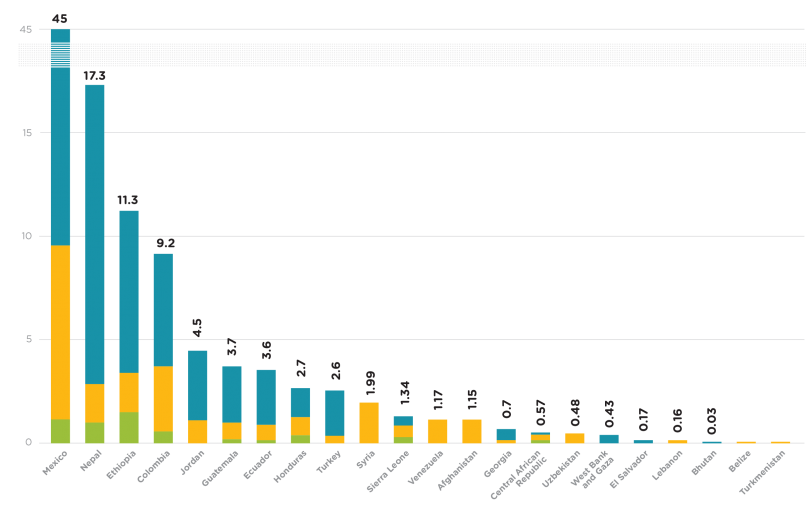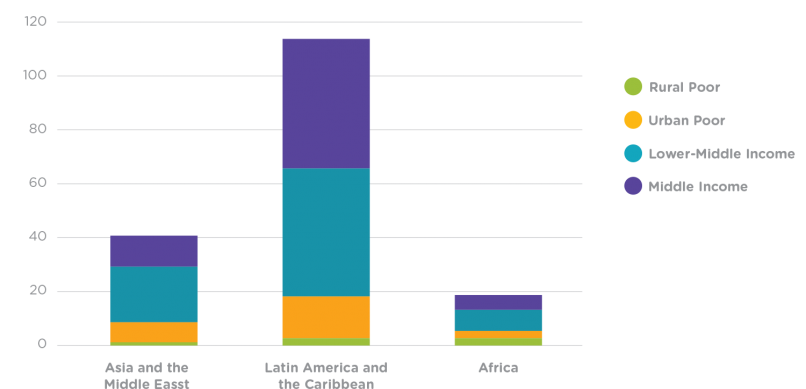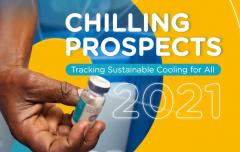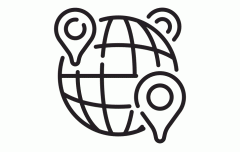Populations at risk in countries not considered high-impact
- Chilling Prospects 2021 has identified 22 countries where cooling access risks are likely to exist for smaller pockets of the population, pinpointing an additional 172 million people that are likely at risk.
- This includes over 5.8 million people living in poor rural settings and 25.1 million people living in poor urban settings who are at high risk due to a lack of access to cooling.
- It also includes 77.0 million people among the lower-middle income group, and a further 64.6 million among the middle income that are at risk of purchasing inefficient and non climate-friendly cooling appliances.
The Chilling Prospects series tracks access to cooling risks across 54 countries considered high-impact due to their geographical exposure to high temperatures and vulnerability to high electrification rates and harsh economic conditions. While these 54 countries, and in particular the Critical 9 [1], should remain a priority for access to cooling interventions, this does not preclude the fact that middle-income and developed economies are likely to have populations who face cooling access risks due to localized vulnerabilities related to heat stress and socioeconomic factors such as poverty, homelessness and urbanization. Given their potential risk of poverty, these populations are likely to have lower mobility, fewer and less reliable public services, and a smaller impact on policymaking processes, all factors that affect their ability to access sustainable cooling solutions.
Chilling Prospects 2021 has identified 22 countries where cooling access risks are likely to exist for smaller pockets of the population, pinpointing an additional 147 million people that are likely at risk. This includes over 5.8 million people living in poor rural settings and 25.1 million people living in poor urban settings who are at high risk due to a lack of access to cooling. It also includes 77.0 million people among the lower-middle income group, and a further 64.6 million among the middle income that are at risk of purchasing inefficient and non climate-friendly cooling appliances.
Table 2.2: Populations at risk in 22 additional countries beyond the 54 high-impact countries
Figure 2.12: Populations at risk in non-high-impact countries (millions)
Of the countries not considered high-impact, Mexico has the highest number of people at high risk: 1.2 million people among the rural poor, 8.4 among the urban poor, 35.4 million among the lower-middle income and 33.2 million among the middle income.
To derive the populations at risk, applicable sub-national units, such as provinces, states, or departments (departamentos), were identified for potential exposure to dangerous heat levels based on a World Bank Group methodology measuring the frequency of daily maximum wet bulb temperatures above 32°C. [2] In Colombia, for example, the main cities of Bogotá and Medellín experience colder climates than much of the rest of the country. For the analysis, eight Colombian departments with approximately 33 percent of the country’s total population were exposed to high levels of heat stress. Among those departments, approximately 3.7 million people live in poor urban settings and are at high risk due to a lack of access to cooling.
Chilling Prospects 2021 allows for a more comprehensive, global assessment of cooling access risks than previous editions. Including the rural and urban poor at high risk in the 22 non-high-impact countries, as well as those in the 54 high-impact countries, the analysis shows that the total high-risk population across 76 countries is 1.12 billion people.
Figure 2.13: Populations at risk by region in non-high-impact countries (millions)
Figure 2.14: Populations at high risk by country, including high-impact and non-high-impact countries








